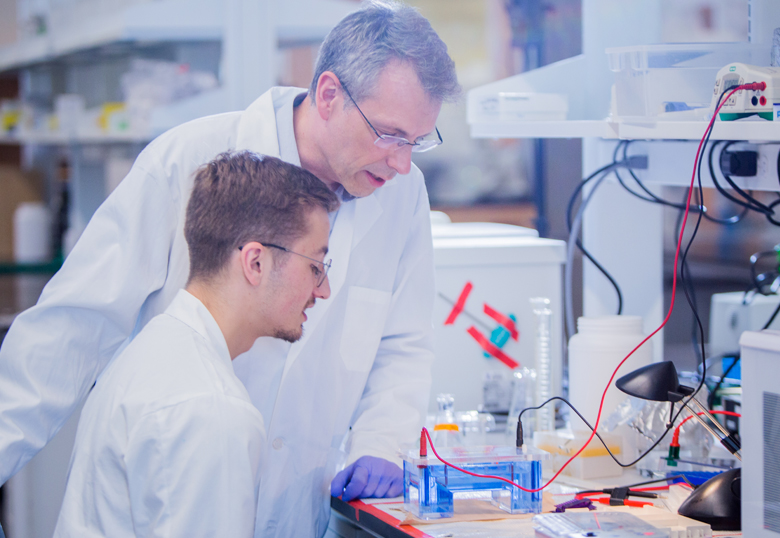University of Lethbridge researchers in the Alberta RNA Research and Training Institute (ARRTI) are making strides in addressing the antibiotic crisis caused by the steady emergence and spread of antibiotic-resistant pathogens.

Recent work on the molecular basis of antibiotic action conducted in the research group of Dr. Hans-Joachim Wieden, director of ARRTI, was published in the Proceedings of the National Academy of Sciences of the United States of America (PNAS). This report, published in one of the three most influential scientific journals in the world, is a result of a collaboration with Dr. Scott Blanchard (St. Jude Children’s Research Hospital, and adjunct professor at Weill Cornell Medical College) and Dr. Karissa Sanbonmatsu (Los Alamos National Laboratory).
“Antimicrobial resistance (AMR) continues to be a global health risk and we need new strategies for developing antimicrobials,” says Wieden, a professor in the Department of Chemistry & Biochemistry. “A global action plan on AMR was endorsed at the World Health Assembly in 2015 and even though this is one of the most predictable challenges for medicine worldwide, research focusing on identifying new antibiotics has diminished significantly.”
Wieden and his graduate students, including co-author Dr. Dylan Girodat (PhD ’19), study the bacterial ribosome and the biomolecular factors that regulate its function. The bacterial ribosome is the part of the essential cellular machinery responsible for protein production and therefore a target for more than 50 per cent of the currently used antibiotics.

Wieden says there are two broad approaches to addressing the issue, finding new drugs for known targets or identifying novel targets for known or existing drugs. Their paper, Elongation factor-Tu can repetitively engage aminoacyl-tRNA within the ribosome during the proofreading stage of tRNA selection, examines the EF-Tu protein and how it works with the ribosome during the complicated process of translation.
“By understanding, at the molecular level, how EF-Tu and the ribosome work together, we are convinced it will be possible to identify novel targets for antimicrobials or even a completely novel mode of action,” says Wieden.
The work by Girodat, who recently defended his PhD, has translated into an outstanding professional opportunity as well.
“Not only has Dylan’s work been published in a fantastic journal, he’s secured a postdoctoral position with Dr. Sanbonmatsu at the Los Alamos National Lab in New Mexico,” says Wieden. “This is the kind of success and impact that sets U of L trainees apart.”
